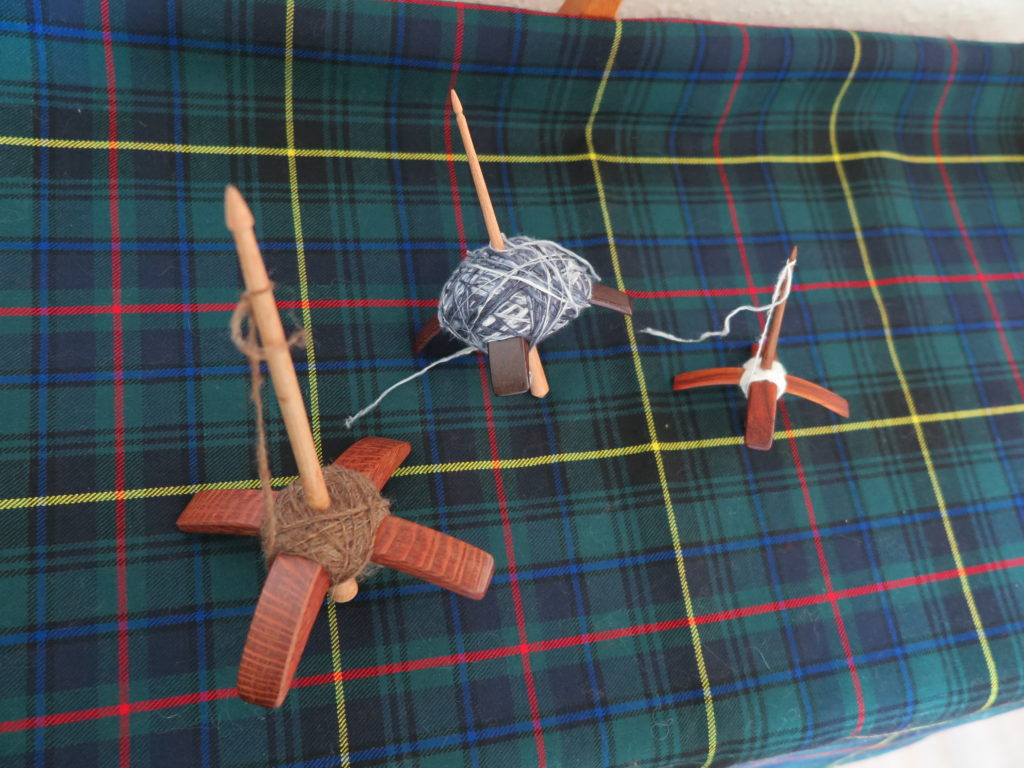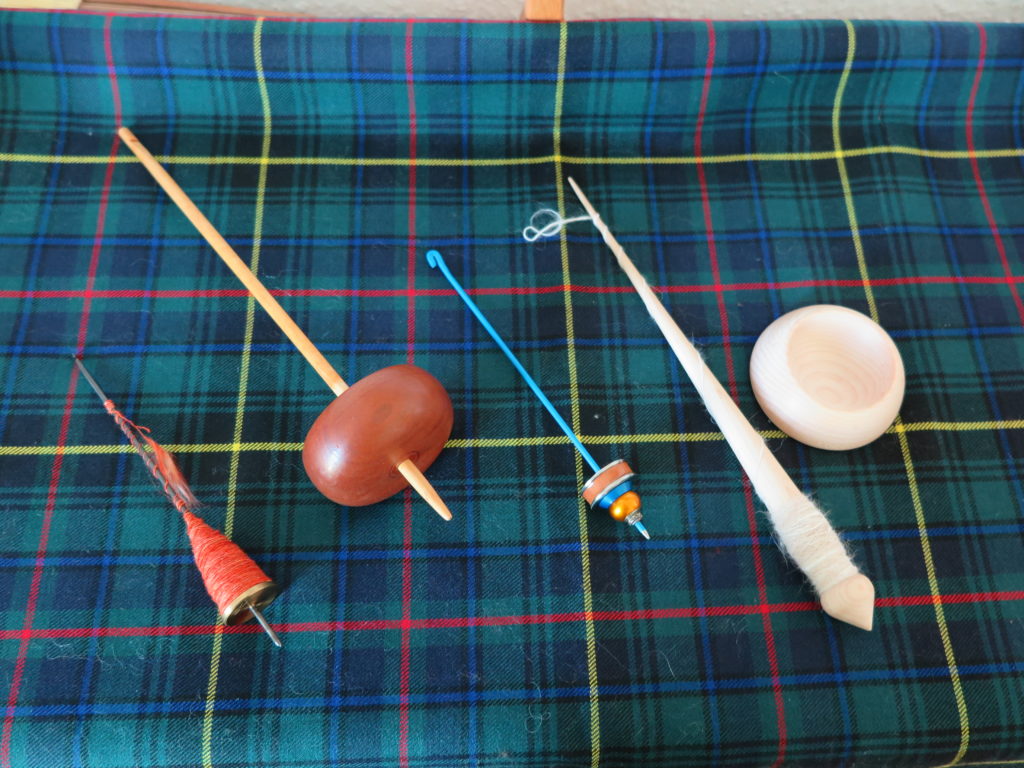A little while back somebody at my knitting group asked about the spindle I was using and how much I paid. I gave an estimate of around $70 as I don’t remember the exact price, and several people were really surprised. Some don’t spin, and thus have no point of reference. But others in the group do spin, and clearly for some of them, their point of reference for what a spindle “should” cost was much lower. It was also clear that this stemmed in large part from the (not unusual) assumption that spindles are fun, but wheels are really where it’s at for production spinning, so why would you spend money on what is essentially a toy?
Unfortunately, my German is too poor for me to get up on my soapbox at the knitting/crafting get togethers. I was able to convey that my spindle was hand made, so I felt the price was fair, and that I have spun enough for sweaters on my spindles, so they aren’t just novelty items for me. But that was about it. So I’m getting on my soapbox here instead.
Now, I have some workhorse spindles that cost me much less than the one I was using Sunday and I love them. But if you want to combine beauty and function, a spindle isn’t going to be “cheap”, though it’s going to be less expensive than a wheel*. For a lower price, I find you can either get function or beauty, but rarely both. Don’t get me wrong – I think a highly functional spindle has it’s own beauty, though of a sort usually only spinners can easily spot. But if you want fancy woods, beads or other trimmings, you will have to pay for them or sacrifice function.

And I’ll take plain and functional over an inexpensive, pretty, but not very functional, spindle. I’ve bought those, and at best they don’t get used (none of those made it across the pond with me). At worst, they can leave a beginner thinking they are incapable of learning to spin, or will never spin well. It can be easy to underestimate the care and skill that goes into making a spindle. It’s just a stick and a round thing right? Let me tell you, I’ve had some pretty sticks that don’t go round very well. When a spindle has a lot of wobble, and it’s intrinsic to the design (so not from a bent hook which can usually be fixed), it can be a pain to use. Things like shaft length also matter, and are often overlooked in spindles focused more on asthetics than function since more generic standards of what is pretty and attrative are applied.
Recent history aside, I spin a fair bit and it’s worth it to me to have a couple more indulgent spindles that tick both the boxes and will give me hours of enjoyment while using them. And that will cost me more money, both because of the more expensive materials, but also because somebody probably made it by hand. And their labor and expertise is valuable. I value the products of my hand spinning. I should value the product of another persons’ hands no less.

All this said, nobody should feel like they need to spend more than they can afford on a spindle. It’s important to have well functioning spindles at a range of price points. You can even make pretty decent ones easily, such as with a dowel rod and a wooden wheel or CD. I am not advocating buying expensive spindles. For many beginners I’d recommend buying at the lower end of the price range (around $20 for a wooden drop spindle, as low as $10 for a simple metal tahkli) and favoring function over beauty if budget is an issue. Afterall, you need some money for the fiber too!
Rather, I’m saying that when I look at a price I don’t judge whether it’s “too expensive” just by the price. What is the price covering? What’s delivered? What’s it made of? Was it made by hand? How well does it function? Some of my worst buys (value for money) were mid-priced spindles ($30-$50) that looked pretty but didn’t quite get the function right.
I also think it’s critical to take spindles seriously. It’s totally ok to spin mostly on spinning wheels, but for thousands of years, spindles of all sorts were it – all our clothing, blankets, sheets, sails for boats, every bit of woven fabric started as thread or yarn spun on a spindle. That doesn’t sound like a toy to me. In fact, they remain a critical tool for many communities around the world in producing their textiles.

*If I added up all my spindles, they are probably worth the cost of a spinning wheel. But that cost is spread over years.

Also, it’s harder to use a spinning wheel while hiking, stopped totally dead on the highway in a traffic jam, and between sips of your drink at the bar. (Not impossible, of course, just harder.)
Comments are closed.